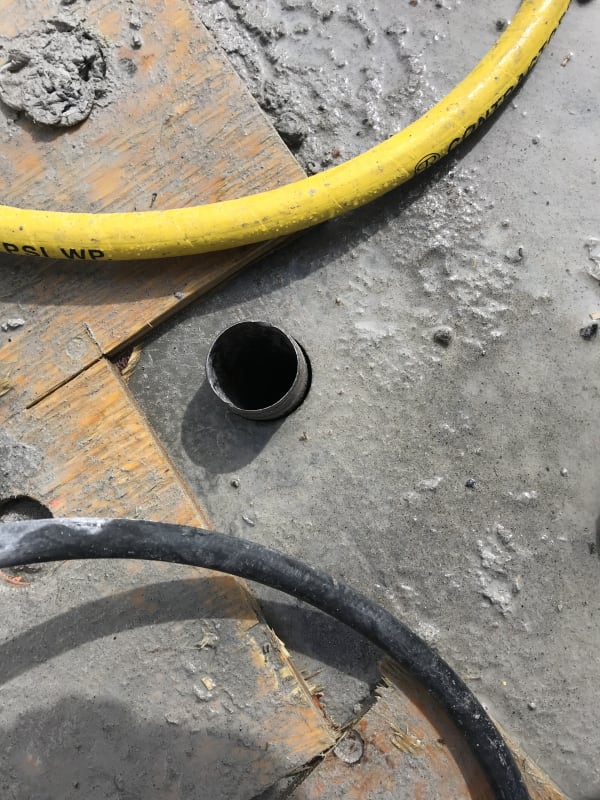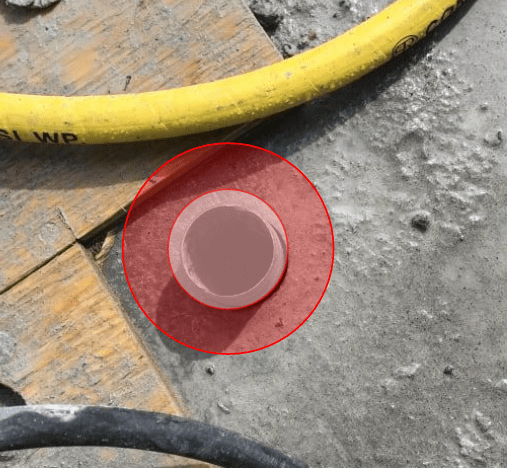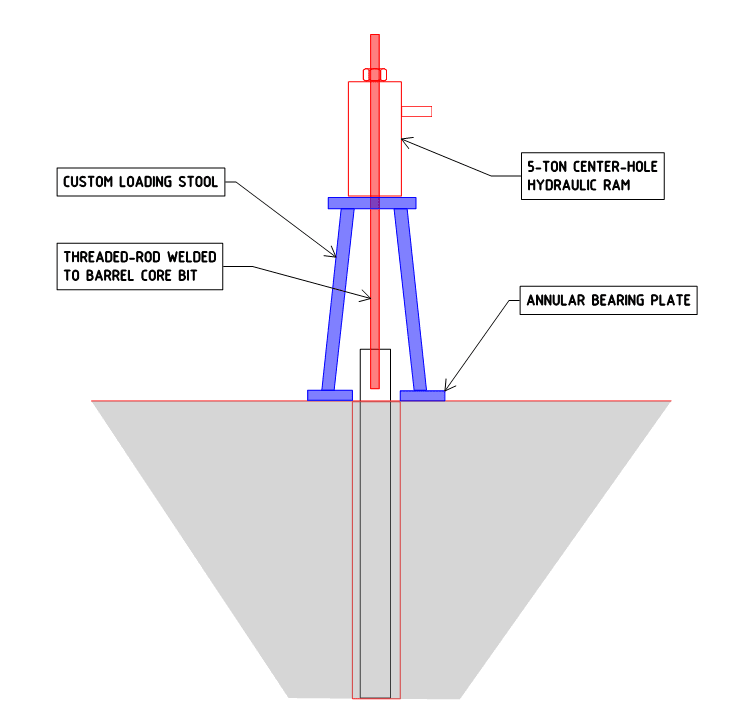I have had this happen numerous times. It really really sucks when it is a large 12" dia core bit...and you hit prestressing strand...and the diamond teeth shear-off. Bad days!
First question I usually ask of myself (or the driller/operator) is why did it happen? Often it is that you hit a rebar on the outside edge and the small crescent-shaped segment that resulted has displaced into the the space between the core bit teeth - wham, wedged tight.
Your photo looks like a barrel bit, with segments that flush-screw attach to each other, to achieve greater core depths. Barrels have a rather thin wall thickness, and my experience has been that about 50% of the time it is tough to remove successfully (hydraulically with an attachment) without breaking the core.
I assume abandoning the core and re-locating is not an option.
I would proceed as follows:
1. Try to remove the stuck core segments using an attachment of some sort and a hydraulic jack - what do you have to loose. To avoid concrete breakout cone, use an annular steel plate around the top of concrete bearing surface and the jack (preferably a center-hole ram) should load this plate such that you are doing a CONFINED pull test. If you don't confine in this area then you do risk a possible breakout;
2. If the hydraulic removal works, then do a visual on the hole and check for an obstruction, then proceed with coring (new core bit/s?) to required depth;
3. If the jacking operation was not successful, then plan B of oversize 75mm core hole. Using the 75mm core, I would drill to the depth of the stuck core, stop, remove the stuck bit, then switch back to 64 mm bit and drill to required depth. Clean out hole and presumably grout in the bar. If you are using Wil-X cement grout with the Williams bar the additional annular space at the top of the core should not be a problem. If it is a epoxy-based grout then you may need to add a filler to the larger annular but I doubt you will (unless you bar is small dia) because the surrounding concrete will be a large heat-sink and take care of the exothermic reaction and avoid cracking to your epoxy.
If the core hole is too smooth for sufficient bonding, I have acid-etched the core wall and flushed with copious amounts of water to neutralize. Works well in removing cement paste and 'opening' the pores of the concrete.




